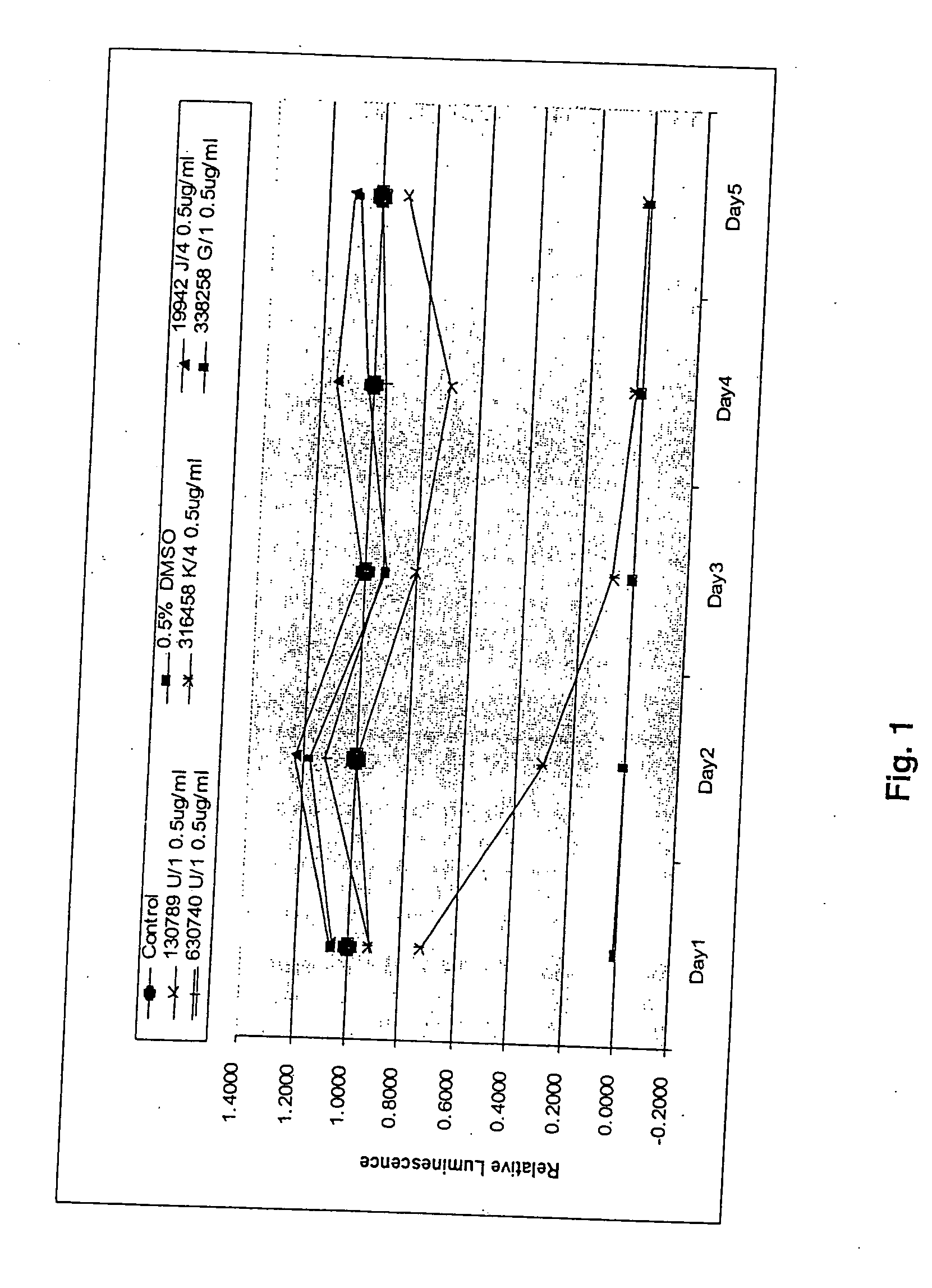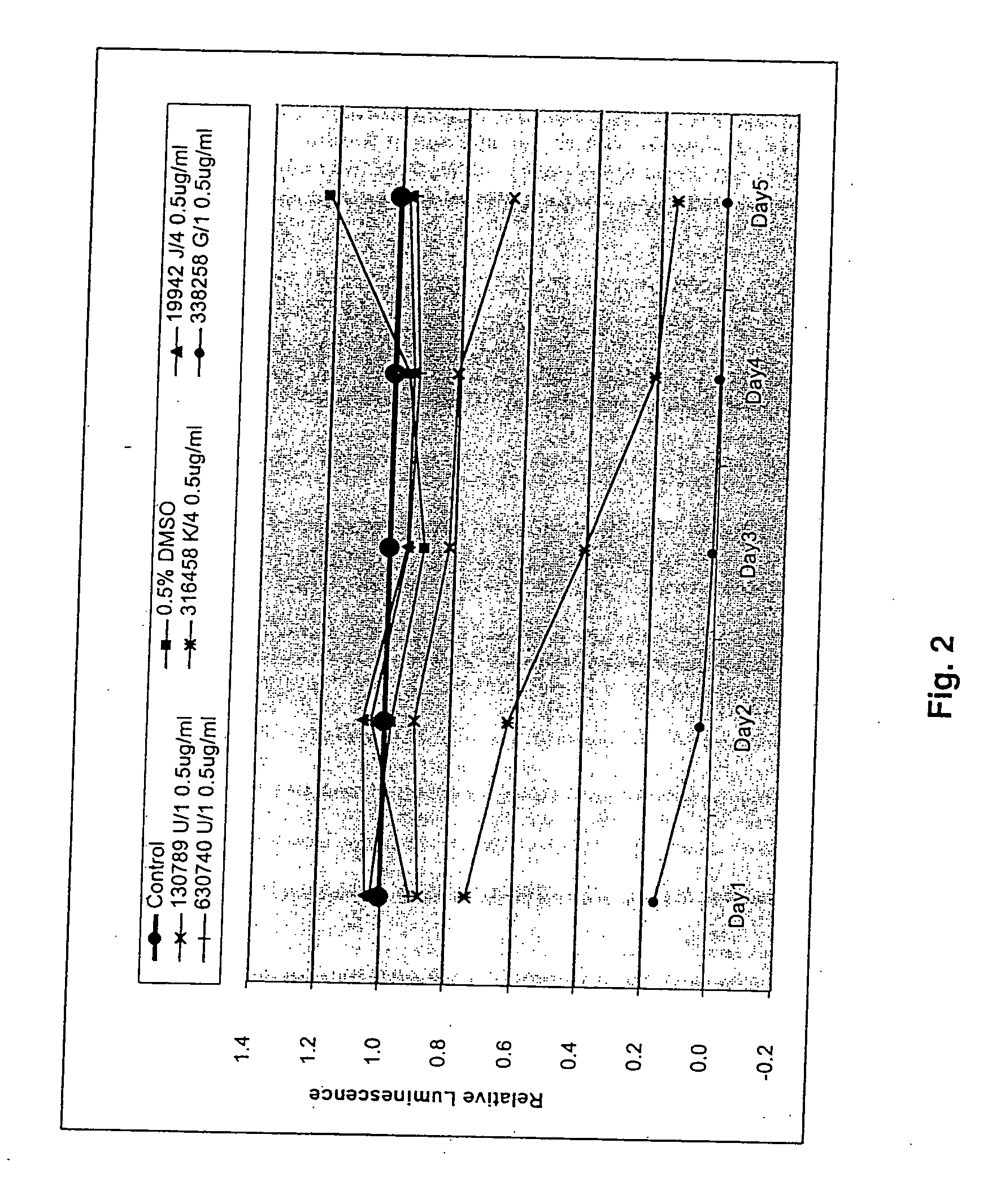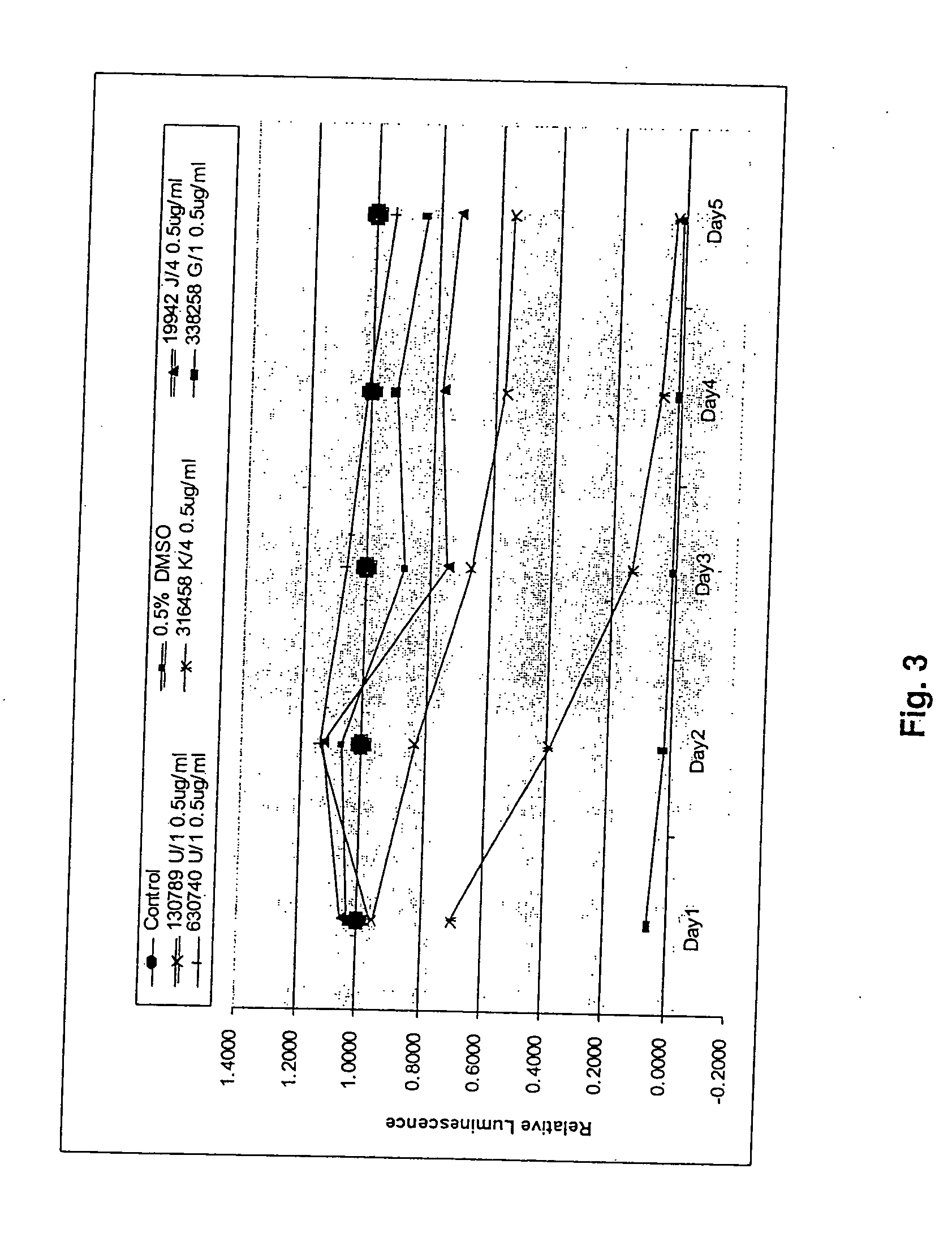Antineoplastic activities of ellipticine and its derivatives
a technology of ellipticine and its derivatives, which is applied in the field of anti-cancer drugs, can solve the problems of multi-drug resistance and prove fatal, lack of specificity, and rapid metabolism, and achieves the effect of significant anti-myeloma effect and immediate inhibition of cell proliferation
- Summary
- Abstract
- Description
- Claims
- Application Information
AI Technical Summary
Benefits of technology
Problems solved by technology
Method used
Image
Examples
example 1
Preparation of Cell Cultures
[0058] All experiments were carried out in 96-well tissue culture plates. Cell counts were made for all cell lines using a hemacytometer. The cells were diluted to 20,000 cells / ml of medium. An aliquot of 50 μl was seeded for final cell counts at 1,000 cells / well.
example 2
[0059] All compounds to be tested were originally dissolved in 100% DMSO at the concentration of 1 mg / ml. In the initial pilot dosage tests, the final concentrations of each compound were set at 5, 2.5. 1 and 0.5 μg / ml.
example 3
[0060] Cell Titer-Glo luminescent cell viability assay kit from Promega Co (Madison, Wis.) was used to determine cell growth inhibition by the various compounds tested. The kit determines cell viability by quantifying the amount of ATP present in the cell culture medium. Presence of ATP signals the presence of metabolically active cells (3). The intensity of luminescence was measured by a computerized luminometer (Promega, Co. Madison, Wis.). Each well was read five times within 30 minutes of adding Cell Titer-Glo reagent mixture.
PUM
| Property | Measurement | Unit |
|---|---|---|
| Dimensionless property | aaaaa | aaaaa |
| Dimensionless property | aaaaa | aaaaa |
| Molar density | aaaaa | aaaaa |
Abstract
Description
Claims
Application Information
 Login to View More
Login to View More - R&D
- Intellectual Property
- Life Sciences
- Materials
- Tech Scout
- Unparalleled Data Quality
- Higher Quality Content
- 60% Fewer Hallucinations
Browse by: Latest US Patents, China's latest patents, Technical Efficacy Thesaurus, Application Domain, Technology Topic, Popular Technical Reports.
© 2025 PatSnap. All rights reserved.Legal|Privacy policy|Modern Slavery Act Transparency Statement|Sitemap|About US| Contact US: help@patsnap.com



